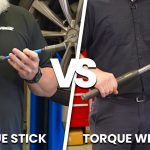Table of Contents
Fittings are an important part of any shop, whether it’s automotive, industrial, or heavy-duty. They make switching between tools easy and efficient. Moreover, fittings are required to connect all components of the compressor and push air into the hose in order to achieve the proper pressure at the line’s end. Air hose fittings are necessary for your air compressor to operate at its peak efficiency.
Compared to hydraulic fittings, air fittings often offer tighter seals, lower pressure requirements, and a wider range of connector types. Depending on the fitting material, there are primarily two types of air fittings that are commonly used, and they are brass air fittings and steel air fittings. So, before we jump into the comparison of brass vs steel air fittings, let’s get familiar with these fittings first.
What Is Brass Air Fittings?
Brass air fittings are made with copper and zinc, which offer corrosion resistance, strength, and toughness. Due to their high tensile strength, they are resistant to high pressure or constraint. Numerous pneumatic and medium-pressure hydraulic applications call for brass fittings. Their outstanding corrosion resistance quality makes them suitable for industries such as aircraft controls and tire installation.

What Is Steel Air Fittings?
The air fittings made with steel or stainless steel are mostly utilized with high pressures, vacuums, and water hammer applications. However, steel fittings can be used practically anywhere, especially in hydraulic and pneumatic applications. Moreover, they deliver excellent pipe sealing and retention and leakproof joints.

Brass vs Steel Air Fittings: Are Brass Fittings Better Than Stainless Steel?
Now that you know what brass and steel air fittings are, it’s time to decide which one is better.
“Well, both of these fittings have their advantages, but brass air fittings might just have a slight edge over steel fittings.”
Let’s see how:
Corrosion Resistant
When you’re looking for long-lasting fittings that won’t rust and are highly resistant to corrosion, brass air fittings should be your go-to. Brass corrodes but does not produce weak, flaky rust as iron or steel does. Instead, when exposed to air and moisture, brass develops a solid, long-lasting patina coating. By functioning as a barrier, this layer keeps further air and moisture from coming into direct contact with the brass substrate, preventing further corrosion. Thus, brass air fittings possess better corrosion resistance than steel air fittings
High Temperature Tolarance
Brass is up to 15 times more thermally and electrically conductive than stainless steel, making them perfect for applications that involve extremely high temperatures. Unlike steel air fittings, brass ones tend to have a significantly higher thermal expansion coefficient. Therefore, for projects that require fluid management of petroleum and highly acidic liquids, stainless steel is more appropriate. That is why brass air fittings are ideal for pneumatic applications.
Compatibility And Affordability
Compared to steel air fittings, the brass ones are interchangeable with most manufacturers and easily lock tools onto air hoses. Brass is often more costly than steel as a material. But chances are your brass fittings will seal far better than steel ones.
Some people also use both brass and steel air fittings for their compressed air systems. However, only specific kinds of brass and stainless steel can be utilized in conjunction. Galvanic corrosion will occur in the system if the incorrect kinds are combined. To minimize this danger, exclusively use brass fittings with copper pipe and steel fittings with steel piping.
In conclusion, if possible, go with brass air fittings as they are structurally far superior to steel air fittings. However, if budget is an issue, then you can opt for steel air fittings as they perform very close to their brass counterparts, albeit with some limitations of course.










Leave a Comment